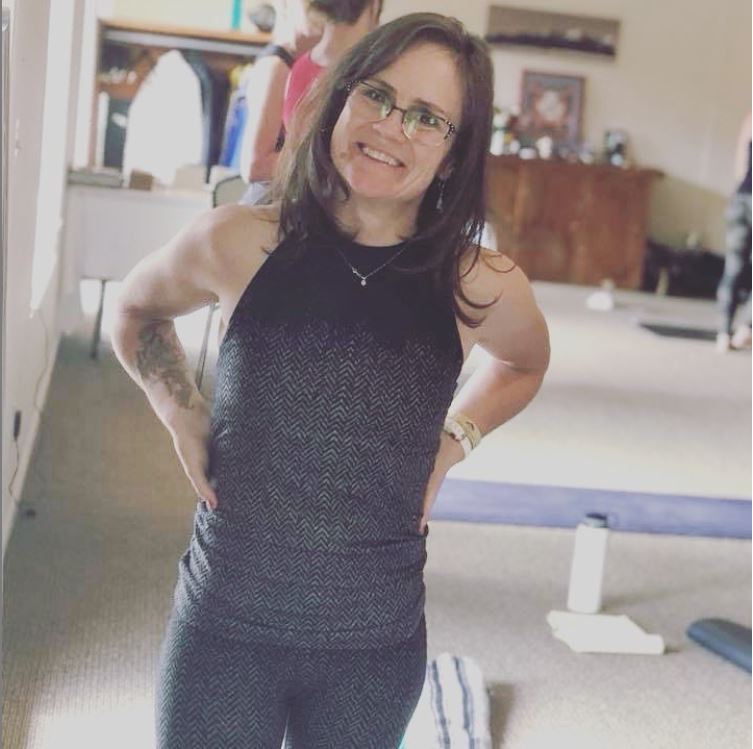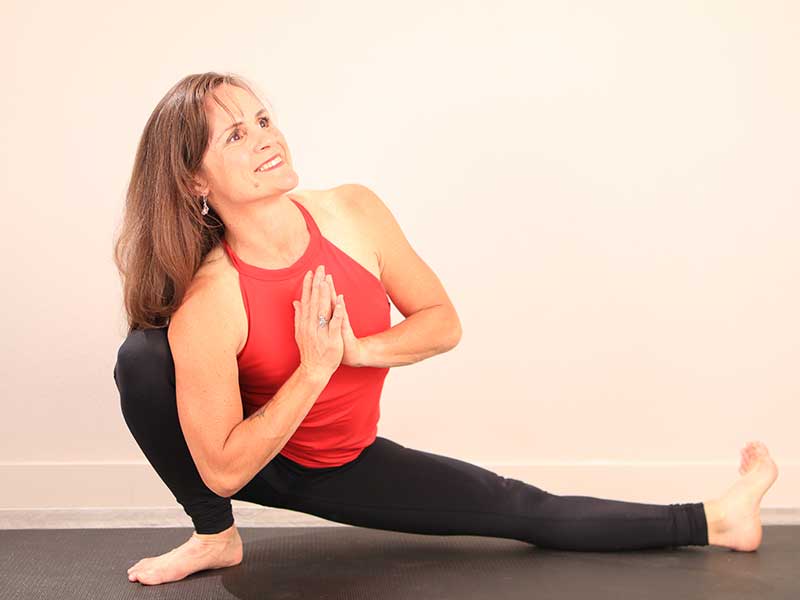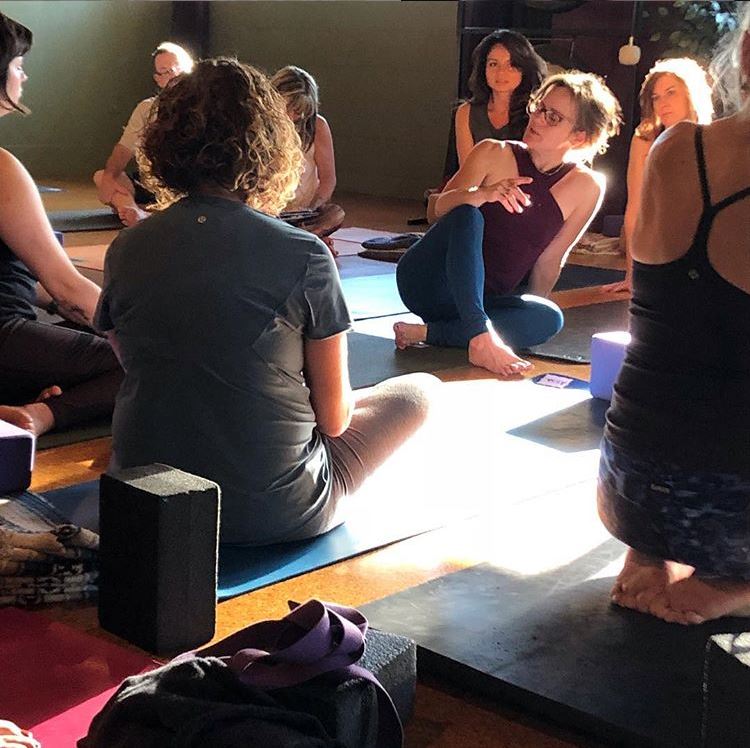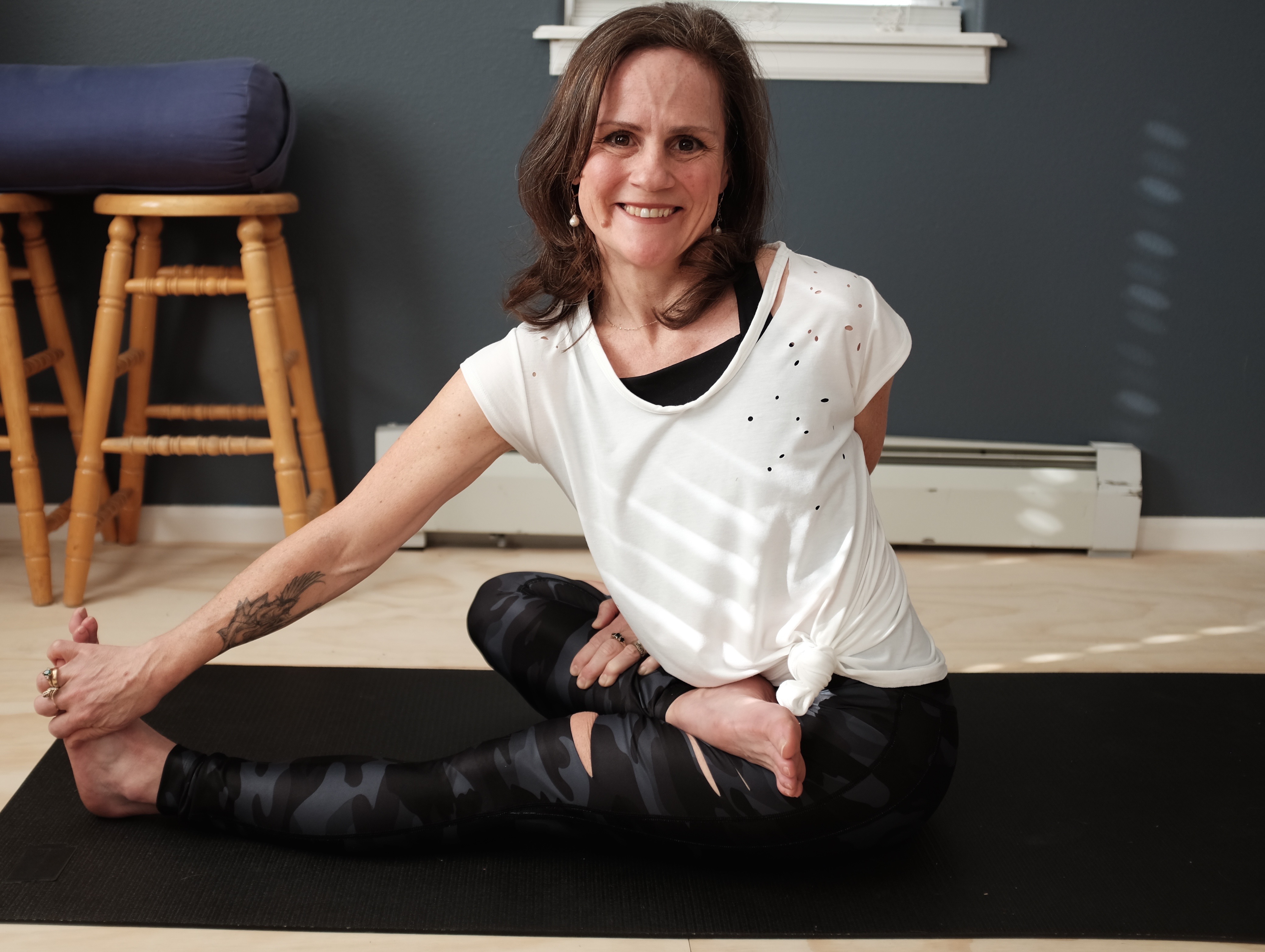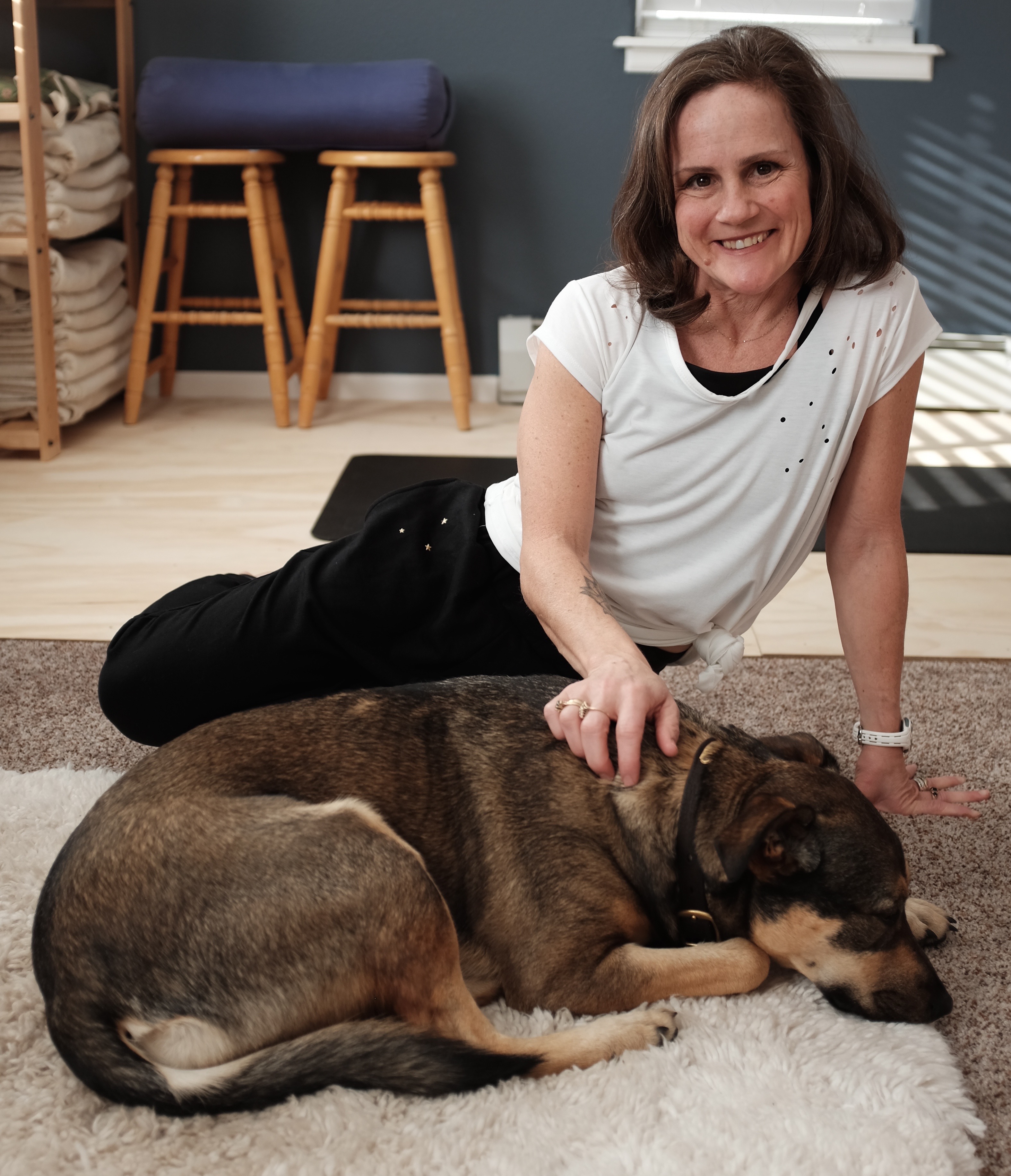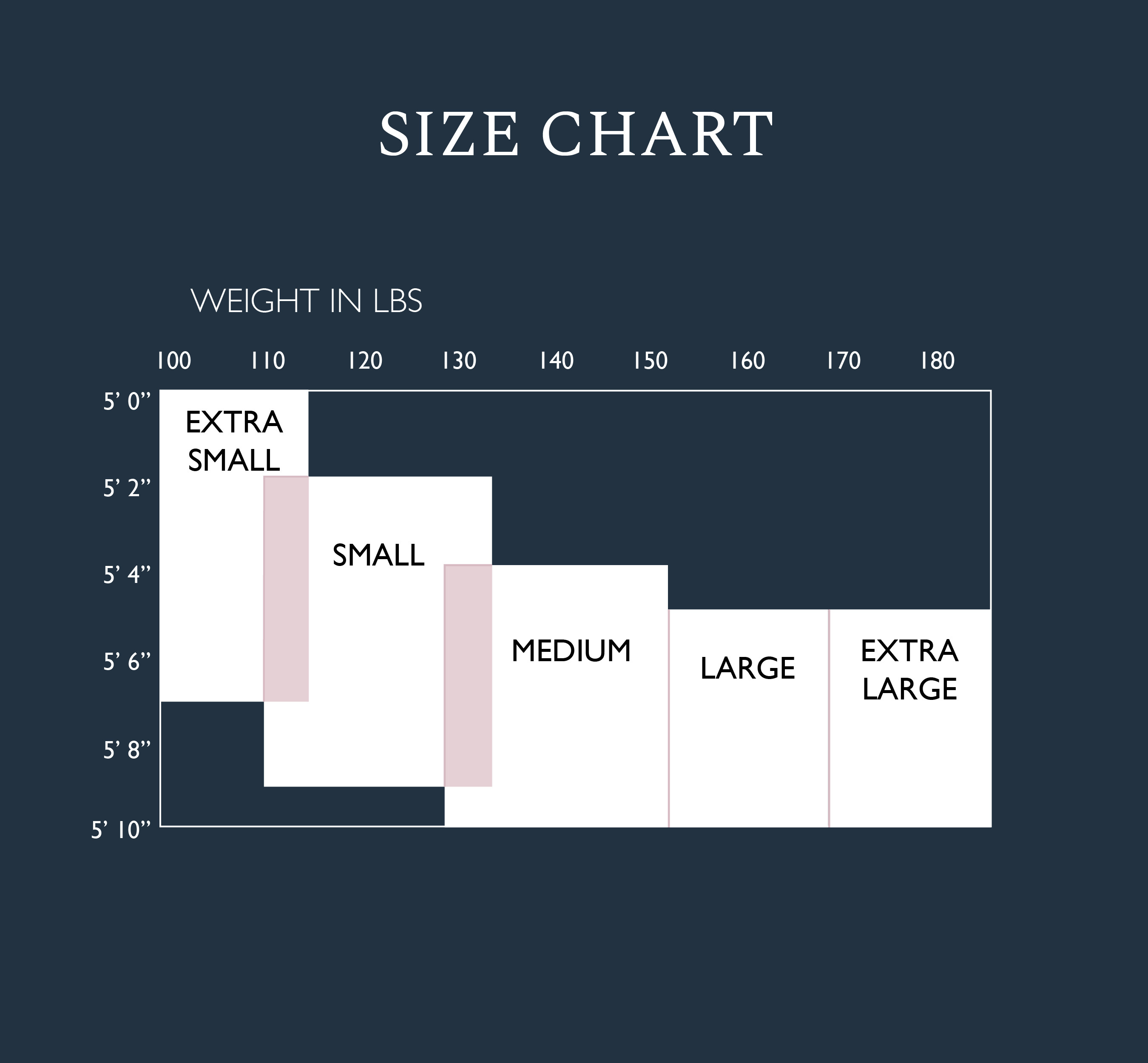
Empowering Women Series: Christina Sell
What is an empowering woman? Immediate words that often come to mind are attributes like strong, courageous, genuine, and influential. But when you look up the actual definition of 'empower,' it means to make someone else stronger and more confident; to give power to another. That is what an empowering woman does above all else â she instills power, strength, and confidence in others.
We are surrounded by so many incredible women at KiraGrace, and we want to share a piece of their stories and characters with YOU in the hope that they will empower you the same way they've done for us. We will be highlighting different women who inspire us, challenge stereotypes, and are just, well, fabulous!
For the eighth issue of our Empowering Women Series, we interviewed the inspiring KiraGrace Global Ambassador Christina Sell. Christina has been practicing asana since 1991 and teaching since 1998. Known for her passion, clarity, and creativity, Christinaâs teaching style is a dynamic and challenging blend of inspiration, humor and hard work. Christina is the author of Yoga From the Inside Out: Making Peace with Your Body Through Yoga and My Body is a Temple: Yoga as a Path to Wholeness. Her third book, A Deeper Yoga is schedule for publication in May, 2019. Christina has a BA in counseling an Education and an MA in Integrative Education and Curriculum Design. She is the founder and director of Christina Sell Yoga Programs and Trainings. Maintaining an active teaching schedule presenting seminars locally, nationally, and internationally, Christina believes that yoga practice can help anyone access their inner wisdom, authentic spirituality and clarify their highest personal expression.
Weâre so excited to be able to feature Christina in our Empowering Women series, and we loved learning more about what inspires her both in her yoga practice and her daily life . . .
KG â How and why did you start practicing yoga?
CS - Meditation was my first yogic practice. I was introduced to Transcendental Meditation in my early 20âs and shortly thereafter, I went to my first Iyengar yoga class.I was living and working in an intentional community and healing arts school in Northern California where there was an Iyengar yoga teacher on the faculty named Gayna Uransky. Gayna introduced herself to me at lunch one day and said, âYou should come to my yoga class.âThe class met in a big barn at 6:30 a.m. I honestly donât remember a whole lot about the class but I do remember walking down to breakfast after class and feeling alive and at peace inside myself.
I took Iyengar yoga classes with Gayna for six months while I lived at the school and developed a home practice during that time. Over the next few years, I had what I think of as an intermittent practiceâ sometimes on, sometimes on. By 1998, following a painful relapse with bulimiaâ a struggle I had since my teen yearsâ I grew more committed to practicing asana and studying in a more in-depth manner. For me, yoga has not an all-at-once endeavor, but more of a slow unfolding and deepening of interest over time.
KG â What challenges has yoga helped you overcome?
CS - I have been practicing yoga for over half my life so, for me, yoga is simply an integrated part of life. For everything yoga has helped me with, such as disordered eating and body-image issues, there have been challenges like comparing myself to others. In times of stress, yoga can certainly help bring ease and centeredness, and also, it can feel like yet another task to accomplish.
That being said, I am profoundly grateful for having a regular practice because a regular practice has given me a way to stay in touch with myself no matter what is happening.
I have four primary practices that I consider the cornerstones of my yoga practice. The first practice is what my spiritual teacher called Remembrance. Remembrance is not a formal practice that I can check off a list. Remembrance is about bringing a qualities of love, compassion, and devotion to my attitudes and actions. As the name implies, this practice is about remembering what is essential in the midst of my ordinary life. I suppose one could say Remembrance is a practice of context more than content.
My second primary practice is nama japa as recommended to me by my spiritual teacher. Nama means name in Sanskrit and japa implies repetition or soft utterance. So this practice is the repetition of the Name of God as a mantra. I like nama japa a lot because I can do the practice anywhere and anytime, which is very practical for a busy person like me.
My third practice is seated meditation. I practice a simple and sweet mantra-based meditation outlined by Paul Muller Ortega called Neelakantha meditation. I sit for ~20 minutes every morning and every afternoon.
My fourth primary practice is asana. I know when people ask me about yoga, they usually mean asana and given that I teach asana and given asanaâs popularity, it is easy to think that asana is my primary practice, when in fact, it is only one facet to my yoga.
And, of course, there are many accompanying, supportive endeavors I use like mantra, pranayama, time in nature, writing, etc. In a way, each practice points me back to the Remembrance and helps me stay pointed in the direction of what is most important to me and within me.
KG â What is an essential part of your day?
CS - First thing every morning I wake up and my dog rolls over and stretches and I scratch her belly. That might be my favorite moment of any day!
I meditate shortly after waking and then again later in the afternoon. I rarely miss a session. In fact, as I have gotten older, when time is short, I generally will skip asana, rather than miss meditation.
I also enjoy sitting down with my husband before dinnerâ sometimes with a cocktail and always with no phones or computersâ to connect with one another and to transition from the dayâs activities and work-related tasks to private, family centered time. My aging father lives with us and so sometimes we include him and sometimes my husband and I take that private time to nourish our relationship before we have dinner with my father.
KG â What is something you wish you had more time to do?
CS - I make time for so many things I enjoy-hiking, biking, reading, writing, asana, meditation, cooking, and so on. Mostly I wish I had more time to do all those things because they each serve such a vital role in my health and well-being. And, if time was unlimited, I think it would be fun to go back to school and study comparative religion and Jungian psychology.
KG â What do you want your students to take away from their practice with you?
CS - Mostly I want students to feel in touch with themselves and to have an authentic relationship with their practice. I am less concerned with my students agreeing with everything I say than I am with them knowing what they think and feel about any given topic.While not every classroom situation allows for discussion or debate, I am very comfortable with my students drawing their own conclusions from the teachings I offer.
I see yoga class as a shared inquiry. I have a fairly structured and precise teaching style as opposed to a âdo your own thingâ approach. Each pose is like a set of questions and each one of us may reach different answers to the questions the poses ask us. For instance, we might all be practicing triangle pose which will ask us to consider, leg strength, hip mobility, spinal twisting, etc., and how we answer those questions will be different depending on our bodies, our understanding of the posture and ourselves, etc. And, it is reasonable to expect that our answers will change over time.
I feel the same way for deeper considerations of the heart and Spirit. How each of us relates to the philosophical premises upon which yoga is built will vary based on our background, our religious orientation, our temperament and our intention. At some point as a teacher I realized my primary aim was to educate and inspire my students, not to convince, coerce, or convert them.
I ask questions. Students find their own answers.
KG â What is your mindset when you step onto your mat?
CS - I love asana and I love practicing the postures and yet, truth be told, I donât have very lofty intentions most days during practice. Some days I have poses I want to work on, other days I am working through various stiffness's from another activity, some days I am sorting out a sequence for a workshop or training, and other days, I am sort of checking it off my list.
I think of asana a lot like brushing my teeth or eating my vegetables. I like it, it is good for me, I always feel better when I do it, and yet, I donât always feel all that inspired about it. I suppose my attitude might disappoint some people, but for me, asana is a very ordinary part of life.
Over the years, I have come to see that any one practice is not as important as the cumulative effects of those practices over a long period of time. I used to put a lot of pressure on myself to achieve poses or to have breakthroughs. These days I am mostly grateful for the many ways that asana has helped me learn about myself, physically and attitude wise. Knowing how my big toe relates to my chest, why I can and cannot do certain poses, and experiencing the subtleties of my own energy far outweigh the big poses I used to pursue.
KG - What is your favorite yoga pose of the moment?
CS â I love Ardha Matsyendrasana 2. Ardha Matsyendrasana 2 is a seated twist with one leg in lotus and a bind around the back to grab the lotus leg shin. It really gets to a stiff place in my upper back that feels great.
KG â Why is yoga important to the times weâre living in?
CS - When I look at the news one thing I notice is that corporations, marketing agencies, politicians, churches, friends, etc., are all vying for our attention and our allegiance to their ideals. I think yoga is a way that we can develop a deep and abiding relationship with our own attention and learn to be in choice about what we pay attention to and what we are going to do with our valuable life energy. In a time where we are seeing an increasing amount of violence, division, and fear play out in the world, any touchstone to wholeness, transcendence, and hope we have can help bolster us against the tendency to be swept into the currents of dissent and discord.
I do not think down dog makes the world a better place, but I do think that regular contact with our inner depth can help us meet lifeâs challenges with greater clarity and dignity. Of course, none of us are perfect just because we practice yoga, but having the teachings and practices are like having a guides and signposts along the way to help stay on course.
KG â What is your spirit animal?
CS - My dog, Locket, of course! I consider her to be one of the most perfect creatures on the planet. She is fun, playful, smart, and quite an independent thinker. She and I dabble in training games and we have been learning some basic agility moves together. She is a great reminder of joy in practice because as soon as the games are not funâ usually because I get too seriousâ she shuts down and wonât do anything, not even for a really tasty treat. She reminds me to stay light and playful in training and practice.
KG â What makes you feel empowered?
CS â I feel most empowered in my life when I am in contact with a source of power greater than myself. When I look back on big risks I have taken, hard times I have walked through, and difficult situations I have navigated, I realize I am usually equal parts afraid and courageous. I think of empowerment as a deep recognition and remembrance of where true power resides and a willingness to rely on that source more than to give in to the voices of anxiety, fear, and projections. I find a lot of strength through prayer, through time in nature, and through my long-time relationships.
KG â What makes you feel most fulfilled?
CS - I feel very fulfilled when I am teaching, writing, sharing good company with people I love, and when I am playing with my dog. However, essentially, fulfillment isnât so much in the exact nature of any of my given activities, but lives in my capacity in any given moment to recognize the depth and meaning living within even the most ordinary circumstances. For instance, cooking dinner, doing housework, and answering emails can be pretty tedious but those chores can also be a chance to nourish myself and others, to sanctify my living space, and to communicate with care. By the same token, teaching, writing, etc., can be very fulfilling but can also be frustrating and full of challenges.
KG â What accomplishment or aspect of your work are you most proud of?
CS â I am very proud of my next book that will be published in the spring of 2019, A Deeper Yoga. Actually, I am proud of the other books also. My third book is the most straight-from-the-heart-as-I-see-it book I have written. In A Deeper Yoga, I relied more on my own words and perspectives than explaining other peopleâs ideas or teachings and as a result, I believe the writing is authentic, empowered, and potent.
I am also very proud that many of my students and I have sustained relationships for over twenty years. A wise teacher of mine once said that âsuccess, as a teacher, is not found in recognition or accolades but exists in the capacity to keep students interested for over a decade.â While I think my students are responsible for keeping themselves interested over the long haul, I am very pleased with the fact that many of the people to whom I introduced yoga are still practicing and have become fine teachers with their own unique voices and expertise.
KG â Do you have a favorite quote you live by?
CS - One of my therapists once asked me,âDo you want to be good or do you want to be whole?â I rely on this inquiry frequently because perfectionist tendencies run very deep in my psychology and in many of my studentâs relationships with themselves and yoga. Perfectionism is a trap and keep the joy of life and the contentment of self-acknowledgement always out of reach. Wholeness is a more fulfilling perspective from which to live because wholeness allows room for making mistakes and reminds me that I can grow beyond my current limits and I can also love myself just as I am right nowâ faults and all.
 KG â What is your favorite piece of KiraGrace clothing that you own?
KG â What is your favorite piece of KiraGrace clothing that you own?
CS - I pretty much love all my KiraGrace clothing, but perhaps the Grace Halter tops are some of my favorite. The style is very flattering and also functional. Also, the Grace tights are pretty great. Regardless of the specific item I might choose, I always feel professional and refined in my KiraGrace clothes. I also love how each collection has several statement pieces with interesting patterns and unique designs and also has pieces that are versatile and combine well with past collection. Each season there are things that are new and excited but also provide endless chances for creativity and personal expression.
Learn more about Christina here.
If you enjoyed this blog, check out our others like: "Empowering Women Series: Sianna Sherman," "Empowering Women Series: Octavia Raheem," The Art of Aging Gracefully: Issue 3", and "The Art of Aging Gracefully: Issue 2."
